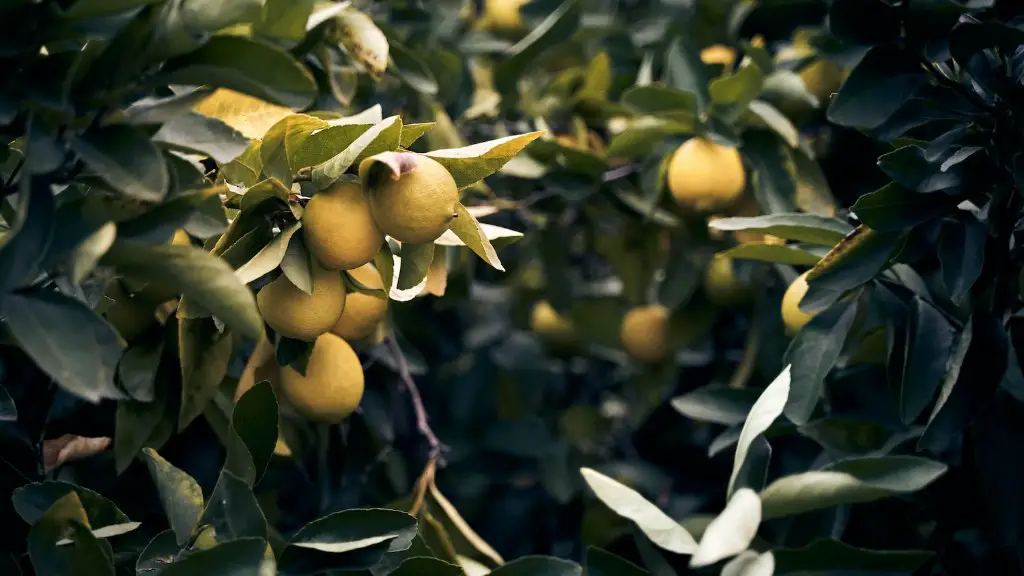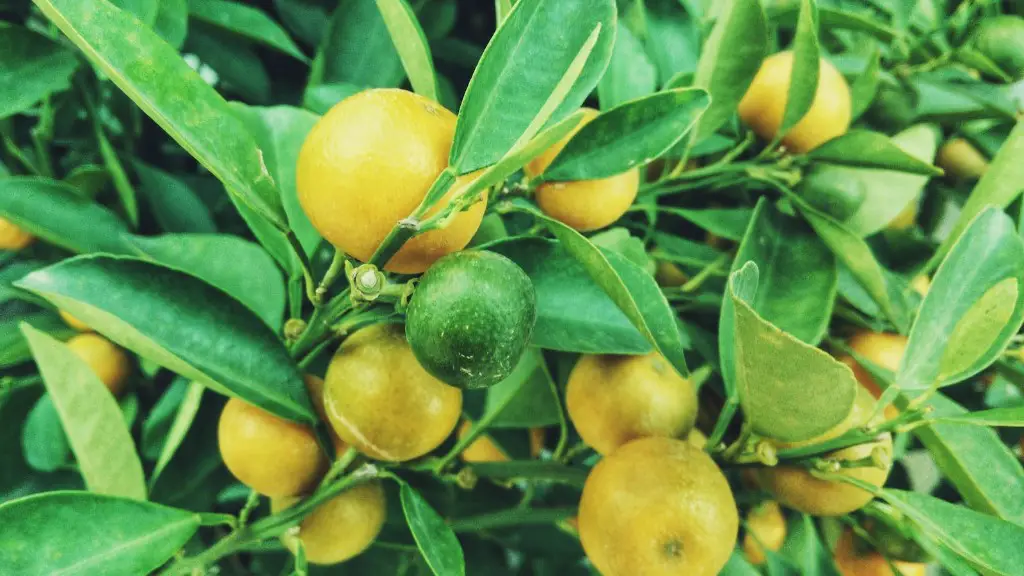Owning a lemon cypress tree can be a beautiful, vibrant addition to your home or garden. But if it begins to turn brown, it could mean a variety of possible issues. In order to stem the issue, the reasons behind why the tree is turning brown must first be determined. Here are a few explanations why your lemon cypress tree may be turning brown.
The first, and most likely cause, for the browning of your lemon cypress tree could be a lack of water. This can be particularly apparent during the summer months when the sun is strong and temperatures soar. To check if this is the cause, place your finger into the soil. If it feels dry and not damp then it likely needs more water. If this is the issue, water the tree more frequently and ensure the soil is damp.
The next possibility is a particular fungus or pest infestation. If at the base of the trunk there is a small amount of white material, this could be indicative of a scale insect infestation. In such a case, the tree would need to be professionally treated to avoid any further damage.
From another angle, it could be that something is wrong with the soil or tree itself. If the soil is too high in nitrogen or too low in magnesium this could be leading to the browning. The soil must be tested to find out the exact levels of nitrogen, magnesium, and other elements contained in it.
Finally, it’s possible that the lemon cypress tree has been accidentally exposed to a herbicide, insecticide, or fungicide. If any debris or droplets of material have been found next to the tree, it is likely the cause. In this situation, the herbicide should be removed and the tree exposed to a natural product instead.
Overwatering
Overwatering and poor drainage can also be major causes of browning. This is because excess water in the soil causes the growth of fungi and other unwanted organisms which can adversely affect the tree’s health and cause the leaves to brown. If the soil is consistently too moist, it is important to adopt a different watering regime, allowing the tree to dry out between waterings.
Additionally, poor drainage is particularly problematic for lemon cypress trees, if the tree is planted into an area which is too waterlogged, the roots will not be able to absorb sufficient nutrients from the soil and the tree could become weak and stunted, with the leaves beginning to yellow or brown.
Compaction of the soil can also be an issue, squeezing the roots together and restricting their absorption of the essential nutrients they need. If this is the issue, it is important to loosen the soil around the tree and repot it into a larger space.
Finally, it’s possible that a ‘garden boundary’ such as a pathway or brick wall may be creating a heat island which is restricting the access of oxygen to the tree and causing it to dry out and the leaves to brown. It is advisable to move the tree or extend its part or full shad before it continues to die.
Lack of Sunlight
Lemon cypress trees require a lot of sunlight in order to absorb enough light for photosynthesis. If your tree is deprived of light, it can have a detrimental effect and cause the leaves to turn brown. To ensure the tree is getting enough light, ensure it is placed in the sunniest corner of your garden and that the area is free from shade, debris, and other obstructions which may block sunlight.
The amount of sunlight should also be monitored, a cyber hour of direct sun in the summer and a minimum of four hours during the autumn and spring is necessary for healthy lemon cypress trees. If your tree is not getting this amount of sun, it should be moved to a sunnier location or use artificial lighting to supplement the natural light.
Another area of concern could be excessive heat. If the temperature where the lemon cypress tree is grown is too hot for it to handle, the leaves may start to brown and burn. In this situation, it is important to move the tree to a shadier, cooler spot and provide regular water to the roots to help them to continue absorbing nutrients.
Finally, it could be the case that citrus trees can struggle when temperatures drop below freezing. If this is the case, the leaves will dry up and turn brown even though the tree may still be alive. In order to protect it, the tree should be moved indoors, or alternatively you can use a frost cloth to cover the tree during the nighttime to protect it from the cold.
Pruning
The lemon cypress tree can be a notoriously difficult tree to prune, with simple mistakes resulting in trauma to the tree and the browning of the leaves. If the tree has recently been pruned, it can cause the tree to go into shock due to the removal of its leaves which can cause the existing leaves to brown and seem lifeless. To remediate this, it is important to use sharp pruning tools, make symmetrical cuts, and also to take out no more than one-third of the branches’ length in order to regenerate new healthy shoots.
In addition, it is important to understand the pruning cycle of lemon cypress trees in order to avoid browning. Lemon cypress trees should be pruned once a year in the late summer – early autumn. This allows the new growth to emerge in the spring and avoid dryness during the winter months which can cause the leaves to brown.
Finally, it is important to ensure the right type of pruning is used when caring for lemon cypress trees. It is important to understand the difference between topping and shearing, as topping can be particularly damaging to the tree’s health and cause browning of the leaves. If a tree needs pruning, the pruning should be directed at a point of new growth and should not involve removing whole branches.
Nutrient Deficiencies
Nutrient deficiencies in the soil may also be a root cause for the browning of lemon cypress trees, particularly where the soil is poor in organic matter. Essential nutrients for lemon cypress trees include nitrogen, potassium, and magnesium. To check if the soil is deficient, a soil testing kit can be used and the nutrients replaced if necessary.
It is also important to note that even with sufficient nutrients, the tree can experience a deficiency due to over-fertilizing or incorrect amounts of fertilizer. If too much fertilizer is used, the nitrogen and potassium can cause the roots to become overly vigorous and the leaves to start to yellow or blacken and eventually brown. This can be avoided by limiting the application of a complete slow release fertilizer to twice a year, while also applying a one-quarter strength solution every two weeks.
If the problem still persists, the use of a chelated iron product can also help to reduce yellowing and browning. Chelated iron is applied directly to the roots and leaves of the tree and can help improve the absorption of essential nutrients. If this doesn’t work, a specialized fertilizer designed specifically for lemon cypress trees can be used to help revitalize the tree.
Finally, it is important to check the pH of the soil, as too acidic or too alkaline soil can also lead to nutrient deficiencies and the subsequent browning of the leaves. If the pH is wrong, it can be amended by adding lime to the soil to reduce its acidity, as well as adding sulfur to increase its acidity.
Air Circulation and Sunburn
Finally, it may be possible that your lemon cypress tree is being affected by a lack of air circulation or sunburn. Sunburn and heat stress can occur if the tree is placed close to a reflective surface such as a wall or on a concrete surface. This can cause the leaves to become too hot resulting in browning, it is important to check if any of these reflective surfaces exist close to the tree and, if so, to move the tree away from them.
Air circulation is also extremely important for lemon cypress trees, with too little impacting their health and leading to the browning of their leaves. To ensure the tree is getting enough ventilation, the branches should be pruned regularly and any dead, dying or diseased branches should be removed. It is also important to ensure that the tree is free from big and heavy deciduous trees which could be obstructing its air circulation.
To ensure that your lemon cypress tree is getting the right amount of air circulation, it is advisable to always place it next to an open area, such as a pathway or other uncovered space. Furthermore, during the summer months, it should be placed near a fan or air conditioner to reduce the heat stress on the tree and to encourage healthy air circulation.
These are just a few possible sources for the browning of your lemon cypress tree. Any of these issues can be fixed if correctly identified and treated, however depending on the nature of the issue professional help may be required. They will be able to make a diagnosis and provide the correct solution for your specific case.




